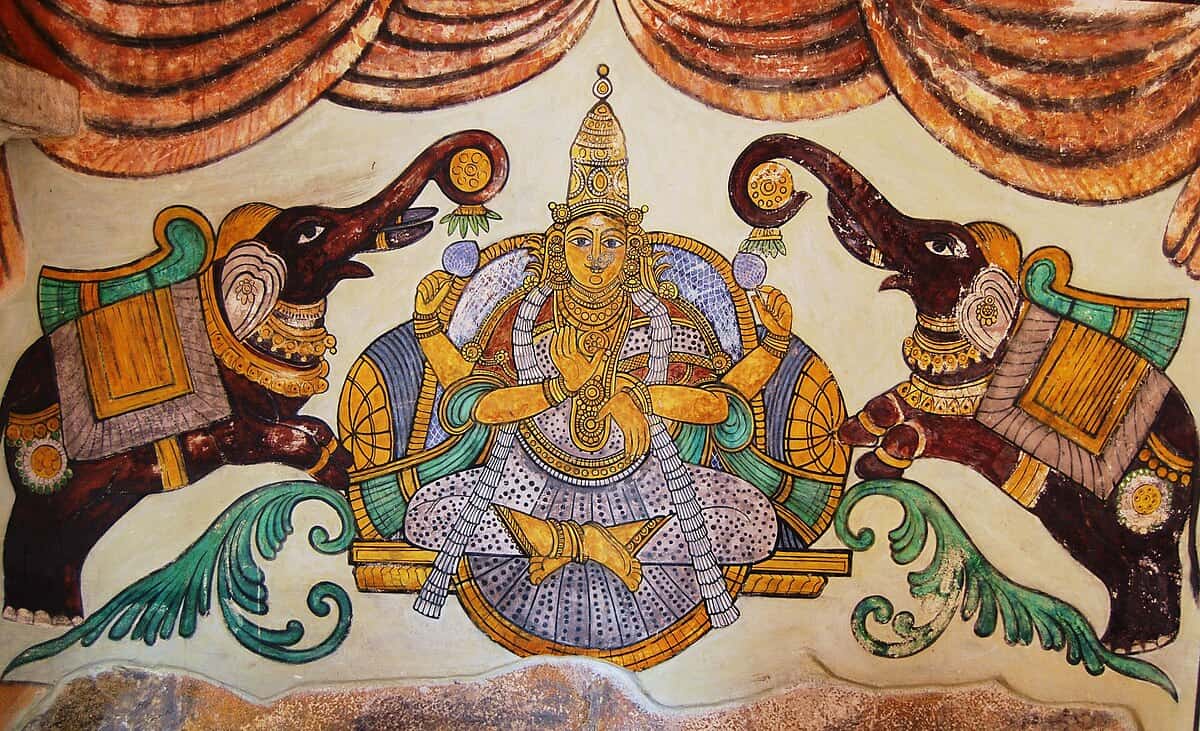Explore 7 stunning Indian Mural sites where historic murals reveal rich stories, artistry, and cultural heritage.

Despite India’s extraordinary mural heritage, most people can only name Ajanta and Ellora when asked about historic wall paintings. Yet, the country is home to many more remarkable sites adorned with stunning murals. Here are 7 additional historic destinations with captivating murals that every art and culture enthusiast should explore.
Bagh Cave
Hidden away in the quiet hills of Madhya Pradesh, the Bagh Caves are located on the southern slopes of the Vindhya Range, near the town of Bagh in Dhar district. This collection of nine rock-cut caves dates back to the late 4th to 6th centuries CE. These masterpieces emerged during the Gupta period, often hailed as the golden age of Indian culture, and are now revered as some of the most exquisite examples of Buddhist art and architecture in central India.
Rediscovered in 1818, the caves continue to fascinate historians, artists, and travellers alike.
Originally carved as Buddhist viharas, or monastic dwellings, the Bagh Caves served as serene sanctuaries for monks. It is believed that the revered Buddhist monk Dataka oversaw their construction. The site flourished under the Gupta Empire, a period marked by immense artistic and cultural achievement. Of the original nine caves, five have survived the ravages of time. Among these, Cave 4, aptly named Rang Mahal or “Palace of Colours,” stands out as a vibrant symbol of the era’s sophisticated craftsmanship and imagination.
The Murals of Bagh
Painted using the tempera technique, the paintings were made by layering the rock walls with a reddish-brown mud plaster, topped with lime and then painted with natural pigments. These murals breathe life into Buddhist Jataka tales, capture bustling scenes from everyday life, and portray lush landscapes filled with animals, plants, and courtly elegance. Unlike the more spiritually inclined paintings of Ajanta, Bagh’s murals radiate a worldly charm, revealing a society deeply connected with the material and the beautiful.
The finest examples are found in Cave 2 (Pandava Cave) and Cave 4 (Rang Mahal), though glimpses of artistry remain in Caves 3, 5, and 7. To protect these precious works, many mural fragments have been carefully relocated to the Gujari Mahal Archaeological Museum in Gwalior, where they are preserved for future generations.
Getting There
Reaching the Bagh Caves is a journey worth taking. Perched above the Baghani River, the caves are nestled into the cliffs, about 97 kilometres from Dhar town.
If you’re travelling by road, start from Indore via NH 52 towards Dhar (approximately 90 km), and continue another 20 km to Naingaon, following signs that point towards the caves. There is convenient parking close to the entrance.
For those taking the bus, frequent services connect Indore to Dhar in around 2 to 3 hours, after which you can hire a taxi or an auto-rickshaw for the final 40 km to the caves.
By train, the nearest major railway station is Indore, from where the route continues by road.
From Naingaon, just 8 km away, you’ll find local autos and shared taxis ready to take you up to the site. It’s always wise to confirm fares beforehand.
The caves are open to visitors daily from 10 AM to 4 PM, and the experience is best savoured in the early morning, when the sun is soft and the crowds are few. Knowledgeable local guides are available and can enrich your visit with stories, context, and deeper insight into the murals and the monks who once lived among them.
Lepakshi Temple
Lepakshi temple or the Veerabhadra Temple, built in the 16th century by brothers Virupanna and Viranna, governors under Vijayanagara ruler Achyuta Deva Raya, is a glowing tribute to divine art, mythology, and cultural grandeur. Though it serves as a sacred site dedicated to Veerabhadra, the warrior incarnation of Shiva, Lepakshi is as much an open museum to Vijayanagara era architecture and storytelling as it is a temple.
Step into the temple’s inner sanctums and you’ll be greeted not just by stone pillars and carvings, but by murals that speak, narrating epic tales, spiritual legends, and even glimpses of 16th-century court life.
The Murals of Lepakshi
Artistically, the Lepakshi murals are master classes in the use of natural pigments. Bold reds, deep yellows, leafy greens, and carbon blacks come alive over a base of locally made plaster, composed of clay, red ochre, and lime. The figures, often drawn in profile with expressive frontal eyes, angular noses, and tapering waists, follow the distinct visual grammar of the time. The panels are rich, with barely a blank patch of wall, filled with floral arabesques, curling vines, and precise geometric patterns. This unmistakable aesthetic is widely considered the precursor to the Kalamkari tradition, and echoes of these motifs can still be found in the region’s textile crafts today.
These vibrant murals span the ceilings of the mahamandapa (main hall), gateways, and smaller shrines, some stretching up to 25 metres in length: Arjuna receiving the Pashupata weapon in the Kiratarjuniya tale, the coronation of Rama, Shiva and Parvati playing dice, and the many-armed Veerabhadra flanked by devotees and the temple’s builders, frozen in time.
These paintings portray the daily rhythms of the Vijayanagara court, complete with elaborate costumes, ornaments, musical instruments, and classical dance poses, preserving an era that would otherwise be lost to the ages.
Getting There
Lepakshi is just 120 kilometres away from Bengaluru. The nearest railway station is Hindupur, a mere 14 km from the temple, offering connectivity via taxis or local buses. If you’re on the road, National Highway 44 is your best bet, with regular state buses and private vehicles making the scenic drive from either Bengaluru or Anantapur. The temple welcomes visitors throughout the year, though the cooler months between October and March are especially ideal for a relaxed and crowd-free experience.
Mattanchery Palace
Mattancherry Palace, also known as the Dutch Palace, is a historic landmark situated in Kochi, Kerala. Built by the Portuguese in 1555 as a gift to the Raja of Cochin, the palace was later renovated and expanded by the Dutch in 1663, which led to its popular name. The palace is an architectural blend of the traditional Kerala Nālukettu style with European influences, evident in its arches and proportions. For centuries, it served as the chief residence of the Cochin royal family and has since become a museum and a symbol of Kerala’s rich cultural heritage.
One of the palace’s most celebrated features is its extensive collection of murals, which are among the finest surviving examples of Kerala’s mural tradition. Beyond the murals, the palace houses portraits of the Rajas of Cochin, royal artefacts like ivory palanquins and howdahs, ceremonial dresses, coins, and stamps. The ceiling of the coronation hall is adorned with intricate floral woodcraft, adding to the palace’s artistic splendour.
Murals of Mattancherry Palace
Executed in the tempera technique using natural pigments, these paintings are characterised by vibrant, warm colours and intricate detailing. The murals primarily depict religious and mythological themes, with the most famous panels illustrating the Ramayana in the coronation hall. These murals narrate the epic story in a unique, puzzle-like pattern called ‘manimala’, covering episodes from King Dasaratha’s sacrifice to Sita’s return from Lanka. Other chambers feature murals of Krishna Lila, Vishnu, Shiva, and even rare depictions such as the birth of Rama and his brothers. Some rooms also display lighter palettes and thinner paint, reflecting stylistic evolution over time.
Getting There
Mattancherry Palace is located in the Mattancherry area of Kochi. To reach the palace, visitors can travel from Ernakulam, the city’s main hub, which is well-connected by rail and road. From Ernakulam Junction railway station, Mattancherry is about 10 km away and can be reached by taxi, auto-rickshaw, or local buses. Kochi is also accessible via Cochin International Airport, about 40 km from the palace. The site is open to visitors, and exploring its halls offers a journey through Kerala’s royal history, artistic traditions, and the enduring legacy of its multicultural past.
Shekhavati haveli
The Shekhawati region, located in northeastern Rajasthan, is famed for its spectacular havelis; grand mansions constructed primarily by Marwari merchant families between the late 18th and early 20th centuries. These havelis arose during a period when Shekhawati, situated on vital trade routes connecting Delhi, Sindh, and the ports of western India, became a hub for commerce in opium, spices, and textiles. Wealthy merchants, eager to display their prosperity and social standing, commissioned these elaborate residences, which are now celebrated as the “largest open-air art gallery in India”.
Murals of Shekhavati
The murals that adorn Shekhawati’s havelis are among the most vibrant and diverse in the country. Painted in the fresco technique on lime-plastered walls, these murals initially depicted traditional themes: Hindu deities, scenes from the epics, local legends, and motifs of flora and fauna. As the region’s merchants grew wealthier and more cosmopolitan, the murals evolved to include secular and contemporary subjects: British officials, trains, steamships, aeroplanes, telephones, and even scenes featuring Jesus and European life. The result is a unique visual record of both Rajasthan’s cultural heritage and its encounter with modernity, blending Rajput, Mughal, and European influences in both subject and style.
Shekhawati encompasses several towns, notably Mandawa, Nawalgarh, Fatehpur, Jhunjhunu, and Churu, each home to dozens of painted havelis. The architecture typically features large wooden gates, ornate arches, jharokhas (overhanging balconies), and rooms arranged around central courtyards, with the most elaborate frescoes often found on the exterior facades and gateways. Noteworthy havelis include Seth Ramgopalji Poddar ki Haveli, Jankiprasad Poddar ki Haveli, and the grand Char Chowk ki Haveli.
Getting There
To reach Shekhawati, travellers can start from Jaipur, which is about 150–200 km away by road. The nearest railway stations are Jhunjhunu and Churu, both well-connected to Jaipur and Delhi.. From these towns, local taxis, auto-rickshaws, or even guided bicycle tours are available for exploring the Havelis and their murals.
Thanjavur Maratha Palace
The Maratha Palace, nestled in the heart of Thanjavur, is not only a testament to the city’s royal legacy and a vibrant showcase of South Indian mural art. This palace, originally constructed by the Nayak rulers in the 16th century and later expanded by the Marathas, offers visitors a unique opportunity to immerse themselves in the artistic traditions that flourished under successive dynasties.
The palace complex reflects the blend of Nayak and Maratha influences, both in its architecture and in its artistic embellishments. After the Marathas took control in the late 17th century, they added their own touches, commissioning artists to decorate the interiors with colourful murals that brought the palace walls and ceilings to life. The Darbar Hall, in particular, stands out for its painted panels and elaborate stucco figures, which together create a regal and immersive atmosphere.
Murals of The Palace
The murals at Thanjavur Maratha Palace are primarily religious and courtly in nature. They depict a wide array of scenes from Hindu epics such as the Ramayana and Mahabharata, as well as stories from the Puranas. Some panels illustrate the coronation of Rama, the playful episodes of Krishna, and various mythological events involving deities like Shiva and Parvati. Alongside these, the murals also feature portraits of Maratha rulers and scenes of courtly life, offering a fascinating glimpse into the social and cultural milieu of the time.
Artistically, these murals are characterised by their vivid use of colour and bold outlines. Figures are often shown in profile, adorned with elaborate costumes and jewellery, and set against richly decorated backgrounds. The technique used combines fresco and tempera styles, with natural pigments applied over a carefully prepared plaster base. The result is a series of paintings that are both strikingly beautiful and remarkably well-preserved.
The palace houses dozens of mural panels, with the highest concentration found in the Darbar Hall and adjacent galleries. While an exact count is challenging due to restoration and overlapping layers from different periods, visitors can expect to see several large narrative panels on the ceilings and upper walls, as well as smaller decorative elements throughout the palace. The murals are complemented by stucco sculptures and ornamental arches, adding to the overall grandeur of the setting.
Getting There
The Maratha Palace is centrally located in Thanjavur, just a short distance from the famous Brihadeeswarar Temple. The palace is open to visitors daily, typically from 9 AM to 6 PM, with a midday closure for lunch. Entry fees are modest, and guided tours are available for those interested in a deeper understanding of the site’s history and art. The best time to visit is during the cooler months, from October to March, when the weather is most pleasant for exploring the palace and its artistic treasures.
Krishnapuram Palace
Krishnapuram Palace, near Kayamkulam in Kerala’s Alappuzha district, was built in the 18th century by King Marthanda Varma of Travancore after his conquest of the Odanad kingdom. The palace follows the traditional Kerala architectural style called Pathinarukettu, featuring gabled roofs, narrow corridors, and dormer windows. Originally a royal residence, it now functions as an archaeological museum preserving artefacts from the region’s history.
The palace is best known for its mural, Gajendra Moksham, the largest single-piece mural in Kerala, measuring about 14 by 11 feet. The palace also displays royal artefacts such as the Kayamkulam Vaal (sword), a Sanskrit Bible, coins, inscriptions, sculptures, and a Buddha statue. Its gardens and pond provide a calm setting for visitors.
Murals of Krishnapuram
The mural style uses bold outlines and expressive faces, with floral borders framing the scene. Besides Gajendra Moksham, the palace contains other mural fragments and decorative panels, though none as large or detailed. These murals reflect Kerala’s tradition of using wall space for storytelling through colour.
Ganjedramoksham is painted with natural vegetable colours on a lime-plastered wall. The mural depicts the story from the Bhagavata Purana where Lord Vishnu rescues the elephant king Gajendra from a crocodile. Positioned at the entrance of the pond, the mural allowed the royal family to offer prayers after their daily bath. The painting shows Vishnu, Garuda, gods, saints, animals, and celestial beings witnessing the event. The lower panel features Balakrishna surrounded by female devotees, reflecting influences from the post-Vijayanagara period.
Getting There
Krishnapuram Palace is accessible via Kayamkulam Junction railway station, two kilometres away, with taxis and auto-rickshaws available. The nearest airports are Thiruvananthapuram International Airport (103 km) and Cochin International Airport (132 km). The palace lies on Oachira Road along National Highway 66, with regular bus services from nearby towns. It is open from 9:30 AM to 4:30 PM, and closed on Mondays and public holidays. Entry fees are modest, with additional charges for photography. The best visiting months are November to February, when the weather is cooler. The palace offers insight into Kerala’s royal history and mural art through its collection and setting.
Alchi monastery murals
Alchi Monastery, located on the banks of the Indus River in Ladakh, is one of India’s oldest and most artistically significant Buddhist sites. Founded in the 11th century, the monastery is part of the Alchi Choskhor complex, which includes four main structures: the Dukhang (assembly hall), Sumtsek, Manjushri Lha-khang, and Lotsabha Lha-khang. Unlike most Ladakhi monasteries perched on hilltops, Alchi is uniquely situated on flat ground, likely due to its proximity to ancient trade routes. The foundation of Alchi Monastery is traditionally attributed to the renowned translator and Buddhist scholar Rinchen Zangpo (958–1055 CE), who played a key role in spreading Buddhism across the western Himalayas.
Murals of Achi
The murals of Alchi are celebrated for their exceptional preservation and distinctive artistic style, which blends Kashmiri, Tibetan, and Indian influences. These murals are among the oldest surviving Buddhist paintings in Ladakh, dating from the 11th to 12th centuries. The artists, believed to have come from Kashmir, used natural pigments and intricate brushwork to create detailed compositions that remain vivid even after nearly a millennium. The murals employ techniques such as bindu-varttana, where shading is achieved through minute dots, and feature a colour palette dominated by reds, whites, and blues.
The murals cover the interiors of all major temples within the complex. The Dukhang is adorned with large images of the Buddha and narrative scenes from his life, while the Sumtsek’s three floors are famed for frescoes and sculptures, including a grand statue of Maitreya flanked by other deities. The Manjushri Lha-khang and Lotsabha Lha-khang also house extensive wall paintings. In total, the monastery contains hundreds of mural panels across its halls and chapels, making it one of the most comprehensive collections of early Himalayan Buddhist art.
The iconography is rich and complex, depicting Buddhas, Bodhisattvas, wrathful and peaceful deities, and intricate scenes from Buddhist cosmology and philosophy. Some murals show rare secular elements, such as hunting scenes and depictions of daily life, which are unusual in Buddhist art and suggest wider cultural influences, possibly from Iranian or Central Asian traditions. The figures are rendered with elaborate jewellery, crowns, and expressive faces, and the backgrounds are filled with floral motifs, geometric patterns, and symbolic elements.
Getting There
Alchi Monastery is accessible from Leh, the capital of Ladakh, which is about 66 kilometres away. The drive from Leh takes around two hours and passes through scenic Himalayan landscapes. Regular taxis and tour vehicles connect Leh to Alchi, and the route is open from late spring to early autumn, as heavy snowfall can close mountain passes in winter. The monastery is open to visitors, and photography is restricted inside the temples to help preserve the fragile murals.
Each mural site stands as a cultural time capsule, safeguarding the emotions, stories, and artistic legacies that span dynasties, faiths, and regions. These artworks are expressions of how India has envisioned the world: through the lenses of beauty, devotion, and layered complexity. As contemporary India surges forward, these painted sanctuaries offer a reminder of the enduring richness found in preservation. To walk through their hallowed halls is to engage with the visions of artists long gone.
Read more: Latest




1 Comment